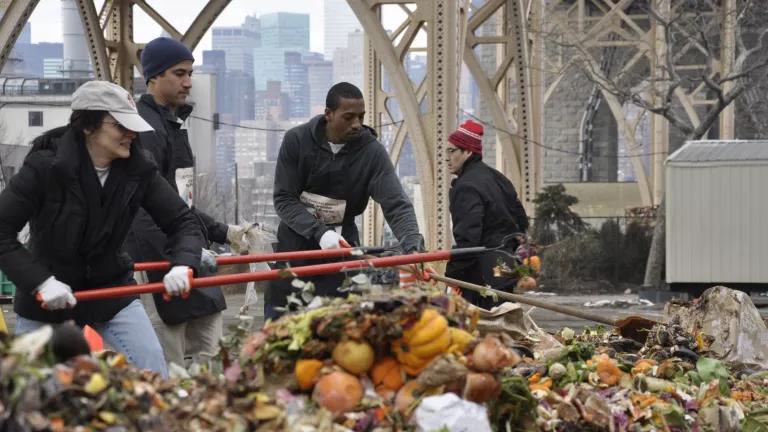“A triple storm is brewing that will give the country an opportunity to reshape its most recent growth pattern from one of ever sprawling suburban developments to more compact, mixed-use, walkable neighborhoods. One storm is dramatically changing demographics; another is increasing energy prices, especially gasoline; and a third is the increasing market preference for walking, biking, and accessible transit. While this storm brews, the present supply of housing -- housing on small lots and rental and multi-housing units--cannot meet future demand. Quelling this storm will require reshaping our suburban communities.” -- Chris Nelson
Like many in my generation I grew up in the suburbs. My parents were part of the first wave of the exodus from America's cities. In the early 1950's, as a newly married young couple they chose to leave Petersburg, Virginia, where my mom had grown up and my dad worked, and settle across the river in a newly incorporated town. The capital city of Richmond, roughly 20 miles up the road, might as well have been Mars as far as they were concerned. I don't recall ever going to that "big city" with my parents for anything while growing up. Sure, I made a few jaunts there with my high school buddies but it wasn't until I started working there after college that city life grew on me.
Now I live in a bedroom community just outside Washington, DC (where I work), but Rockville, Maryland is no small town and it's certainly not anything like I recall the soulless suburbia of my youth. In fact, like many cities Rockville is heavily investing in urban living, most notably through its many "town center" developments that purposefully blend retail and residential amenities with easy access to transit. These days more and more urban areas are embracing this metropolitan approach.
Two (of many) recent articles speak to this trend. First, David Frum (a noted Republican "thinker" who served as President George W. Bush's speechwriter) notes this in a story for CNN:
After five years of depression, the housing market is also ready for renewal. Again, Americans are waiting for market signals: Should they buy smaller houses nearer to work? High and rising fuel prices will encourage developers to build more mixed-use complexes that allow more people to live car-free: walking to work, entertainment, and shopping. The surest way to reduce fuel costs is to drive less.
The return to more urban living is a trend big enough to sustain America's next great economic boom. To the extent researchers can measure, the daily commute appears to be the single worst recurring source of unhappiness in American life.
If changes in city shape can offer more Americans the opportunity to walk to work through an attractive shopping mall, rather than waste 50 minutes in a car in a traffic jam, those changes will advance human happiness, spur new construction work, and incidentally save the planet.
The USA Today just published a story on how cities are competing to keep so-called Millennials from moving away to settle in the suburbs like their parents. The stakes are high because the oldest of 86 million Millennials are turning 30 this year, a time when many marry and start families. This massive demographic wave is even larger than the 77 million-strong Baby Boomers that have dominated social and cultural trends for decades.
Here are some notable excerpts from the piece:
- Cities endured decades of shrinking populations fueled by an exodus of young and old who found refuge from crime, racial tension and poverty in suburbia. When cities began to invest in their neighborhoods with new housing and rail systems and lured entrepreneurs, the turnaround happened. Cities don't want to see the pattern reverse again.
- In many of the largest cities in the most-populous metropolitan areas, downtown populations grew at double-digit rates from 2000 to 2010, according to the Census.
- Developers of traditional single-family subdivisions typical of suburbia are setting their sights on urban neighborhoods. Because space is at a premium, they're opting for townhouses and homes on small lots to create family-friendly suburban housing environments within the city.
- The young have been flocking to cities partly because they can walk to work or take public transportation. They still want that, but when they have kids they also want walkable, transit-friendly schools, grocery stores, and childcare centers.
- Homeowners and renters are spending less of their income on transportation, according to the Bureau of Labor Statistics' Consumer Expenditure Survey. The amount spent on transportation fell more than 20% from 1986 to 2010. Not owning a car may be chic to the younger generation but when they start families they still want to spend less on transportation. Not having a car saves money on gas, insurance and loan payments — that can help deter the cost of more expensive urban housing or private schools.
[UPDATE: A new report from EPA, "Smart Growth and Economic Success", shows that smart growth development -- compact, walkable, and diverse -- is attractive to developers, investors, local governments, and communities because it offers new opportunities for economic growth that is also environmentally sustainable.]
With most of our population now living in urban areas -- and millions more to come -- it makes (dollars and) sense that planners and developers are recognizing the need to enhance the quality of life for city dwellers, both young and old, through attractive, affordable housing in walkable neighborhoods with easy access to transit, jobs, shopping, and schools. Moreover, recent studies show that residents of transit-served communities have a lower cost of living andlive healthier lifestyles than those who depend on cars for mobility. Rising transportation costs mean that consumers are once again recognizing the benefits of living near transit, and developers are building to meet that demand.




